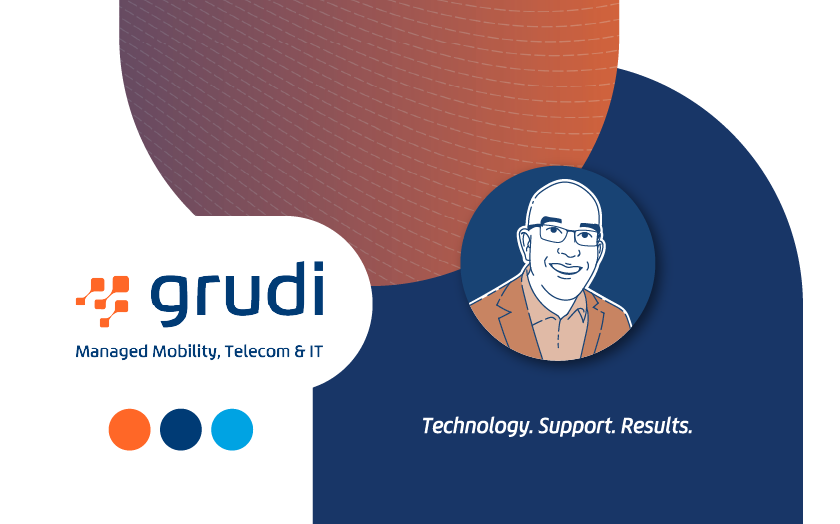This website uses cookies to ensure you get the best experience on our website. If you continue to use this site we will assume that you are happy with it.
Build Credibility With Professional Marketing Collateral
Table of Contents
Has your brand fallen behind?
You’ve built expertise over years. Your team delivers exceptional results. But when prospects see your materials – that outdated PowerPoint, the brochure that doesn’t match your website, the event poster series where every piece looks like it came from a different company – what impression are they forming?
Here’s what I see happening: Organizations create materials in isolation. The annual report gets designed by one person, the website by another team, and the trade show banners by whoever has time that week. Each piece might look fine on its own, but together? They tell a story of inconsistency.
Your expertise deserves materials that reflect your true value. When everything works together strategically, you look like the established, professional organization you are.
In this post, I’ll walk you through why cohesive materials matter for credibility, the most common places organizations struggle, and a strategic approach to getting it right – whether you handle it in-house or get professional support.

Why Material Consistency Matters for Credibility
Professional credibility gets built or eroded one touchpoint at a time. When someone encounters your organization, they’re forming judgments quickly – often within seconds.
Think about your own experience: When you’re evaluating a potential vendor and their proposal looks like it was thrown together in Word while their competitor’s materials look polished and strategic, which one seems more capable of delivering quality work?
Consistent materials signal several things to your audience:
Attention to Detail: If you can’t maintain consistency across your own materials, what does that say about how you’ll handle their project?
Strategic Thinking: Cohesive materials suggest you think systematically about your business, not just reactively.
Established Operations: Professional materials indicate you’re not a startup figuring things out – you’re an established organization worth investing in.
Value Alignment: When your materials look as professional as your actual work, prospects can better understand what they’re paying for.
The problem isn’t that any single piece looks bad. It’s that nothing looks like it belongs together. Your website has one personality, your PowerPoint presentations have another, and your printed materials feel like they came from a completely different organization.
The Hidden Cost of Scattered Materials
Inconsistent materials cost you in ways that are hard to measure but easy to feel.
Lost Opportunities: How many prospects have you lost to competitors whose materials made them look more established? You’ll never know – they just went with someone else.
Undervalued Expertise: When your materials don’t match the quality of your work, prospects assume your work quality matches your materials quality. They negotiate harder on price because they’re not convinced of your value.
Internal Inefficiency: Every time someone creates a new piece, they’re starting from scratch. No templates, no guidelines, no consistency. Projects take longer because you’re reinventing the wheel.
Professional Anxiety: Your team knows the materials don’t look quite right, but they don’t have time to fix them. So you send out that proposal knowing it could look better, hoping your expertise shines through despite the presentation.
Missed Credibility Building: Every touchpoint is a chance to reinforce your professional positioning. Scattered materials waste those opportunities.
Every day you operate with inconsistent materials, you’re competing against organizations that have invested polished, professional design.

Materials That Make or Break First Impressions
Here are the materials where consistency matters most – and where I see organizations struggle:
Annual Reports and Formal Documents
These need to look authoritative and polished. Nonprofits especially can’t afford to have their annual report look like it was assembled quickly. Board members, donors and stakeholders expect professional presentation that matches the importance of the organization’s mission.
PowerPoint Presentations and Pitch Decks
You might present to dozens of prospects each quarter. If your slides look inconsistent – different fonts, random colors, varying layouts – you’re undermining your expertise before you even start talking.
Websites and Landing Pages
These often get developed separately from other materials, but they need to feel connected. When someone moves from your email campaign to your landing page to your downloadable PDF, it should feel like one cohesive experience.
Event Materials
Your event branding should be consistent across all materials – posters, signage, programs, sponsorship packages. We recently created a series of event posters for AIM for Seva where each poster promoted a different speaker but clearly belonged together, making the series looked intentional and professional.
Product or Service Catalogs
Whether digital or printed, these need to showcase your offerings professionally. They often serve as leave-behind pieces or downloadable resources, so they’re representing you when you’re not there.
Grant Proposals and Executive Summaries
For nonprofits and organizations seeking funding, these materials need to convey competence and professionalism. Funders are evaluating your ability to execute – your materials are evidence of that capability.
Digital Series and Campaign Materials
When your digital materials – email headers, social media templates, downloadable resources – don’t coordinate, your marketing feels scattered rather than strategic.
The common thread? These materials are often created separately, by different people, at different times. But your audience experiences them as a whole. They don’t care that your website was built two years ago and your current PowerPoint template was created last month. They just see inconsistency.
The Strategic Approach to Cohesive Collateral
Here’s how to think about materials strategically rather than one piece at a time.
Start With Your Brand Foundation: Before creating any materials, establish your visual identity system. This means consistent colors, typography, logo usage and design elements. You can’t have cohesive materials without a cohesive foundation.
Create Templates, Not Individual Pieces: Instead of designing a single PowerPoint, create a template system that works for different types of presentations. Instead of designing one brochure, establish design principles that apply across multiple materials.
Think in Systems: Group related materials together. Your event marketing might include posters, social media graphics, email headers and signage. Design them as a coordinated system, not separate projects.
Establish Clear Guidelines: Document how your brand elements should be used across different materials. This prevents the “creative interpretation” that leads to inconsistency when different people create materials.
Plan for Print and Digital: Colors that look great on screen might not print well. Typography that’s readable on a website might be too small for print materials. Design with both applications in mind.
Budget for Professional Execution: Some materials – especially those going to print or representing you at major events – benefit from professional design expertise. Know which materials are worth the investment.
The goal isn’t to make everything look identical. It’s to make everything look like it comes from the same organization – one that thinks strategically about how it presents itself.

When to Handle In-House vs. Get Professional Help

Not every material needs professional brand collateral design, but some do. Here’s how to think about the decision.
Handle In-House When:
- You have established brand guidelines to follow.
- The materials are internal or informal.
- You have team members with design capabilities.
- The stakes are relatively low (internal presentations, quick social media graphics).
- You’re working with existing templates.
Get Professional Help When:
- Materials will represent you to important audiences (major clients, funders, board members).
- You’re creating templates or systems that others will use.
- The materials need to coordinate across multiple formats (print and digital).
- Technical requirements are complex (print specifications, accessibility requirements).
- The materials are part of a larger strategic initiative.
- You don’t have clear brand guidelines to follow.
The Middle Ground: Many organizations benefit from professional template creation followed by in-house execution. For instance, we might design your PowerPoint template system, then you create individual presentations using those templates.
Time and Expertise Reality Check: Creating professional materials takes time you might not have and skills your team might not possess. A scattered approach often happens not because organizations don’t care about consistency, but because they don’t have the bandwidth to figure it out while running their operations.
Consider this: How many hours does your team spend creating materials each month? What’s that time worth? Professional help might just save you enough time to pay for itself.
Building Materials That Work Together
When materials work together strategically, the whole becomes greater than the sum of its parts. Your audience starts recognizing your materials immediately. Your team spends less time on design decisions because the framework is established. Your organization looks intentional and professional across every touchpoint.
Quick Cohesion Checklist:
- Do your materials share the same color palette and typography?
- Could someone identify your organization from your materials even without seeing your logo?
- Do your digital and print materials coordinate visually?
- Are you using templates consistently, or are you recreating designs each time?
- Do materials in a series clearly belong together?
The Long-Term View: Consistent, polished materials build recognition and credibility over time. When every touchpoint reinforces your professional positioning, you’re not starting from zero with each new prospect.
Investment Perspective: Professional materials are an investment in how your organization is perceived and experienced. When materials match the quality of your actual work, prospects can better understand and value what you’re offering.
Your expertise deserves materials that reflect your true capability. When everything works together, you can make strong first impressions and build on them strategically.
Organizations that invest in cohesive, professional materials position themselves as the established, capable partners their prospects are looking for. In competitive markets, that positioning makes the difference between being considered seriously and being overlooked for someone who looks more professional.